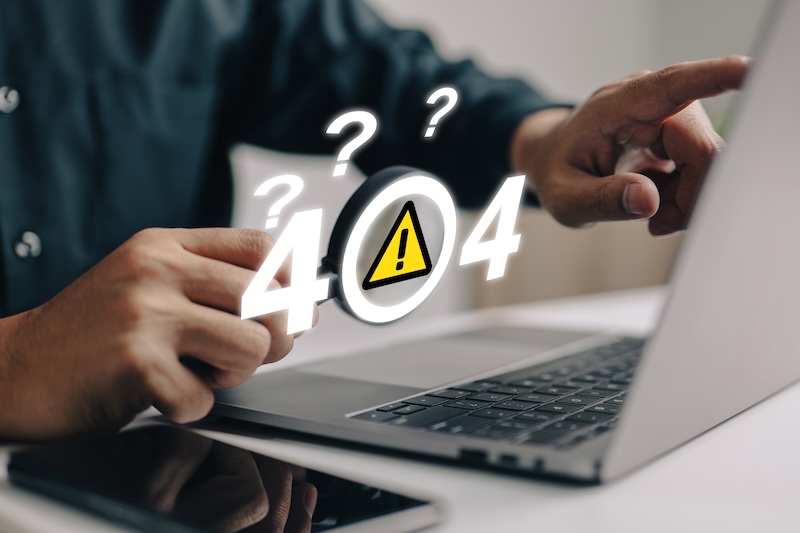In the vast landscape of the internet, where websites are the storefronts of businesses and information, ensuring smooth accessibility and visibility is paramount. Search engines play a crucial role in directing traffic to these digital spaces, and web crawlers are the unsung heroes behind the scenes.
However, like any complex system, errors can occur in the crawling process, hindering the optimal performance of your website. In this blog post, we’ll delve into the world of crawler errors, exploring what they are and offering insights into how to diagnose and fix them.
What are Crawler Errors?
Web crawlers, also known as spiders or bots, are automated programs used by search engines to systematically browse and index the content of websites. Crawler errors occur when these bots encounter issues while attempting to access or analyze a particular page on a site. These errors can disrupt the indexing process, leading to negative consequences for a website’s search engine ranking.
Common Types of Crawler Errors
404 Not Found:
This error occurs when the web crawler attempts to access a page that doesn’t exist. It could be due to a deleted or moved page without proper redirection.
403 Forbidden:
The crawler is denied access to a specific page, usually due to permission issues. This could be caused by incorrect server configurations or overly restrictive security settings.
500 Internal Server Error:
A generic error indicating that something has gone wrong on the server side. It might be due to misconfigurations, server overloads, or issues with server-side scripts.
Robots.txt Errors:
The robots.txt file instructs web crawlers on which pages they can or cannot access. Errors in this file can lead to improper indexing or exclusion of important pages.
How do Crawler Errors affect SEO?
Crawler errors can significantly impact the search engine optimization (SEO) of a website. SEO is the practice of optimizing a website to rank higher in search engine results pages (SERPs) and attract more organic traffic. When web crawlers encounter errors while accessing and indexing a site’s content, it can lead to various negative consequences for SEO. Here’s a breakdown of how crawler errors affect SEO:
Impaired Indexing:
Crawler errors can prevent search engine bots from properly indexing your website’s pages. If important pages are not indexed, they won’t appear in search results, resulting in missed opportunities for visibility.
Reduced Visibility in Search Results:
Search engines use complex algorithms to determine the relevance and quality of web pages. If crawler errors persist, search engines may perceive your site as less reliable or user-friendly, leading to a lower ranking in search results.
Negative Impact on User Experience:
Crawler errors often lead to broken links, missing pages, or slow-loading content. These issues can frustrate users, negatively impacting their experience on your site. Search engines prioritize websites that offer a positive user experience, and crawler errors can signal the opposite.
Loss of Organic Traffic:
When crucial pages are not indexed or have errors, your website may lose organic traffic from users searching for relevant information. A drop in organic traffic can directly impact the effectiveness of your digital marketing efforts.
Ranking Penalties:
Persistent crawler errors may result in ranking penalties from search engines. Search algorithms are designed to prioritize websites that provide a seamless and error-free experience. Sites with recurring crawler errors may be penalized with lower rankings.
Impacted Click-Through Rates (CTR):
Search engine users are more likely to click on results that appear trustworthy and reliable. If your site consistently experiences crawler errors, users may be hesitant to click on your links, leading to a decrease in CTR.
Delayed Search Engine Crawling:
If crawler errors are not promptly addressed, search engines may reduce the frequency of crawling your site. This means that updates or new content may take longer to be reflected in search results.
Hence, ensure you identify and rectify any crawler errors at the earliest so that your website’s SEO is not adversely impacted. Also, follow our 15 easy SEO tips to rank your website higher on all search engines.
Diagnosing Crawler Errors
Check Server Logs:
- Access Server Logs: Server logs contain a wealth of information about how your website interacts with crawlers. Access these logs through your hosting provider’s dashboard or server management tools.
- Look for Patterns: Examine the server logs for any recurring patterns related to crawler errors. Pay attention to timestamps, HTTP response codes, and specific URLs that are generating errors.
- Cross-Reference Changes: Cross-reference the timing of crawler errors with recent changes made to your website. This could include updates to the website structure, changes in server configurations, or modifications to content management systems.
Use Google Search Console:
- Verify Site Ownership: Ensure that your website is verified in Google Search Console. This involves adding and verifying your site using the provided methods to gain access to valuable data about how Googlebot interacts with your content.
- Check Crawl Errors Report: Navigate to the Crawl Errors report in Google Search Console. This report provides a detailed overview of any issues encountered by Google’s crawler while indexing your site.
- Examine Error Details: Drill down into specific error types (e.g., 404, 403, 500) to get more details about the affected pages. Google Search Console often provides information about the time of the last crawl, the response code received, and the URL where the error occurred.
Review Robots.txt File:
- Locate Robots.txt File: Find and access the robots.txt file for your website. This file is usually located at the root of your domain (e.g., www.yourdomain.com/robots.txt).
- Verify Configuration: Ensure that the robots.txt file is correctly configured. Check that it allows access to critical pages and directories that should be crawled by search engines.
- Avoid Unintentional Blocks: Double-check that there are no unintentional blocks that might hinder crawlers’ access to important sections of your site. Be mindful of wildcard directives and ensure they are used appropriately.
How to Fix Crawler Errors
Address 404 Errors:
- Identify Broken Links: Use website auditing tools or Google Search Console to identify pages that return a 404 Not Found error.
- Update or Remove Links: If the page has been moved or deleted, update internal links pointing to it or remove references to the nonexistent page.
- Implement 301 Redirects: For pages that have permanently moved, set up 301 redirects to guide both crawlers and users to the new location. This ensures that link equity is transferred to the new URL.
Resolve Permissions Issues (403 Forbidden):
- Check Server Settings: Examine the server settings to confirm that web crawlers have the necessary permissions to access your website. Ensure that there are no overly restrictive security configurations preventing crawler access.
- Adjust Security Settings: If permissions are lacking, adjust security settings to grant appropriate access to crawlers. This may involve configuring the server or content management system settings.
- Test Access: After making adjustments, thoroughly test to confirm that the 403 Forbidden errors have been resolved. Tools like Fetch as Google in Google Search Console can assist in verifying crawler access.
Fix Internal Server Errors (500):
- Investigate Server Logs: Examine server logs to identify the root cause of internal server errors. Look for patterns, error messages, or issues that coincide with the crawler errors.
- Address Misconfigurations: Rectify any misconfigurations on the server. Common issues include problems with server software, configuration files, or conflicting directives.
- Optimize Server Resources: Ensure that the server has sufficient resources to handle website traffic. Address issues such as server overload, insufficient memory, or slow response times.
- Check Server-Side Scripts: Review and debug server-side scripts to ensure they are error-free. Faulty scripts can lead to internal server errors, impacting crawler access.
Optimize Robots.txt File:
- Review Existing Robots.txt File: Examine the current robots.txt file to understand its directives. Ensure that essential pages and directories are allowed for crawling.
- Update Directives: If necessary, update the robots.txt file to accurately reflect your website’s structure. Adjust directives to allow access to critical pages and directories that should be crawled.
- Test with Google Search Console: Use the robots.txt testing tool in Google Search Console to check for syntax errors or misconfigurations. This tool simulates how Googlebot interprets the robots.txt file.
Regularly monitoring these issues and promptly addressing them is essential for maintaining a healthy website and ensuring optimal performance in search engine rankings. Automated tools, combined with manual checks, can help keep your website free from common crawler errors.
Conclusion
Crawler errors may seem like a technical nuisance, but addressing them is crucial for maintaining a healthy online presence. By understanding the common types of crawler errors, diagnosing issues effectively, and implementing the recommended solutions, you can ensure that search engine crawlers smoothly navigate and index your website. A well-optimized site not only improves search engine rankings but also enhances the overall user experience, contributing to the success of your digital endeavors.
In the complex world of online optimization, seeking professional assistance can be a strategic move. A digital marketing company with expertise in search engine optimization (SEO) in Singapore can play a pivotal role in identifying and resolving crawler errors. These professionals are adept at leveraging tools like Google Search Console, analyzing server logs, and optimizing website structures. Their in-depth knowledge allows them to navigate the intricacies of robots.txt files, address 404 errors through effective redirects, and fine-tune server configurations to eliminate internal server errors.
Partnering with a digital marketing company can provide a holistic approach to website optimization, ensuring that your online presence is not only free from crawler errors but is also strategically aligned with the ever-evolving landscape of search engine algorithms. By entrusting these experts with the technical aspects of your website’s health, you can focus on delivering high-quality content and engaging experiences to your audience, ultimately driving the success of your digital initiatives.








